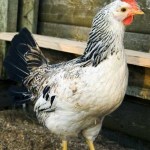domestication
Let me tell you a little story. When I was born my parents had two cats. One was named Garfield. The other...well, I don't remember what the other one was called. Not long after I was born, and little Jason was coughing up furballs, the doctors informed the parents that their little bundle of skin and hair was allergic to cats. It was then that teams were picked and lines were drawn. It was me or the cats. Luckily, the parents decided to keep me, and lose the cats. Imagine how much it would have sucked if they decided to keep the cats and lose me. I imagine if my younger brother had actually…
The party isn't over yet! Here's another helping of Monday Pets. Enjoy!
Wild Dog crawled into the Cave and laid his head on the Woman's lap... And the Woman said, "His name is not Wild Dog any more, but the First Friend."
--Just So Stories, Rudyard Kipling.
Archaeological evidence indicates that dogs were already a part of human society around the end of the Ice Age. Small dog skeletons have been unearthed in human communities as far back as 6- to 12-thousand years ago in Europe, the Middle East, and China. The jawbone of a domestic dog was found in a late Paleolithic grave in Germany, and…
The IGF1 small dog haplotype is derived from Middle Eastern gray wolves:
Background
A selective sweep containing the insulin-like growth factor 1 (IGF1) gene is associated with size variation in domestic dogs. Intron 2 of IGF1 contains a SINE element and single nucleotide polymorphism (SNP) found in all small dog breeds that is almost entirely absent from large breeds. In this study, we surveyed a large sample of grey wolf populations to better understand the ancestral pattern of variation at IGF1 with a particular focus on the distribution of the small dog haplotype and its relationship to…
There's been some buzz over a recent paper, mtDNA Data Indicates a Single Origin for Dogs South of Yangtze River, less than 16,300 Years Ago, from Numerous Wolves. This is tracing the maternal lineage, and suggests that that lineage is most diverse in southern China (just as human lineages tend to exhibit the most diversity in Africa). Here's the abstract:
...We therefore analysed entire mitochondrial genomes for 169 dogs to obtain maximal phylogenetic resolution, and the CR for 1,543 dogs across the Old World for a comprehensive picture of geographical diversity. Hereby, a detailed picture…
Speaking of Richard Dawkins, he's back to science, in this case an excerpt from his new book, The Greatest Show on Earth: The Evidence for Evolution:
The evolution of the dog, then, if Coppinger is right, was not just a matter of artificial selection, but a complicated mixture of natural selection (which predominated in the early stages of domestication) and artificial selection (which came to the fore more recently). The transition would have been seamless, which again goes to emphasise the similarity -- as Darwin recognised -- between artificial and natural selection.
Nothing new in the…
Domestication has a long history. It predates the invention of writing by thousands of years. In the history of biology the study of domestication is closely connected to the emergence of experimental and theoretical biology out of the shadow of natural history. Chapter I of The Origin of Species is preoccupied with animal breeding. The various modifiers of selection, artificial, natural and sexual, are to some extent human constructions. When the constraint of human preferences and needs are removed feral populations of dogs and pigs tend to shift back toward an ancient modal wild type. I…
Over at Gene Expression Classic p-ter points to an interesting paper, Genetic Architecture of Tameness in a Rat Model of Animal Domestication:
A common feature of domestic animals is tameness - i.e. they tolerate and are unafraid of human presence and handling. To gain insight into the genetic basis of tameness and aggression, we studied an intercross between two lines of rats (Rattus norvegicus) selected over more than 60 generations for increased tameness and increased aggression against humans, respectively. We measured 45 traits, including tameness and aggression, anxiety-related traits,…
Sheril's post, Chimpanzees Are NOT Pets!, is good. She notes:
1 Chimpanzees are wild animals. Animals that make good PETS like dogs and cats, have been domesticated for [thousands] of years. There has been selection on them against aggression, which is why a dog, unlike a wolf, will not automatically tear you to pieces. Anyone who has a pet chimpanzee for long enough will eventually no longer be able to control them and will either get a body part bitten off or will have to use extreme force to control them. Chimps live to be 50 years old and grow almost as big as a human male. They have…
Humans have been blamed for the disappearance of species before but never quite like this. Scientists at the University of Oxford have found evidence that two species of bacteria are merging into one. The two species are swapping genetic material at such a high rate that they are on the road to sharing a single, common genome. Their genetic merger is probably the result of being thrust into a new environment - the intestines of heavily farmed chickens, cattle and other domesticated livestock.
The two bacteria in question - Campylobacter jejuni and Campylobacter coli - are two of the most…
Photograph of a chicken. Click to see larger version. From PLOS article cited in blog post.
Where and when were chickens domesticated?
From whence the humble chicken? Gallus gallus is a domesticated chicken-like bird (thus, the name "chicken") that originates in southeast Asia. Ever since Darwin we've known that the chicken originated in southeast Asia, although the exact details of which one or more of several possible jungle fowls is the primal form has been debated. The idea that more than one wild species contributed to the early chicken has been on the table for a long time,…


